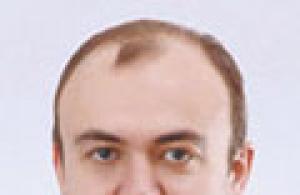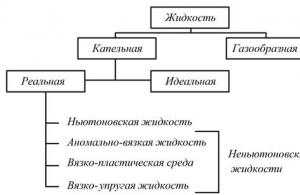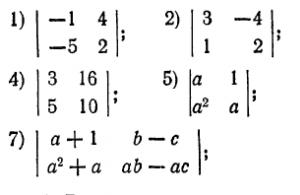The useful life of an asset (fixed asset) is one of the main indicators necessary when determining the amount of depreciation. Depending on the useful life (SPI), the asset is included in one or another depreciation group in tax accounting (Clause 1, Article 258 of the Tax Code of the Russian Federation). We will tell you in our consultation which depreciation group the video surveillance system belongs to in tax accounting, as well as what period for such an object can be set in accounting.
Video surveillance system: what shock absorption group?
The depreciation group of a fixed asset object is established in tax accounting in accordance with the Classification of fixed assets included in depreciation groups (Government Decree No. 1 of 01.01.2002). However, the video surveillance system is not named in the Tax Classification.
The Tax Code of the Russian Federation provides that if some types of fixed assets are not indicated in depreciation groups, the SPI for them is established by the organization in accordance with the technical conditions or recommendations of the manufacturers.
As a guideline when determining the depreciation group for video surveillance, an organization can take into account that communication equipment is classified as information, computer and telecommunications (ICT) equipment with code 320.26.30. In the Tax Classification, it also corresponds to the group of objects “Communication equipment, radio or television transmitting equipment” with OKOF code 320.26.30.1. Such objects are classified as the 4th depreciation group with SPI over 5 years up to 7 years inclusive. For DVRs, the depreciation group can also be set to 4, unless other terms are provided for by the technical specifications, as well as the manufacturers’ recommendations.
Video surveillance system: useful life in accounting
In accounting, when establishing SPI, an organization takes into account, among other things, the expected life of an object in accordance with its productivity or capacity, expected physical wear and tear, which depends on the mode of operation or natural conditions, etc. (Clause 20 PBU 6/01). But the organization sets this deadline independently. After all, there is no mandatory accounting classification. But to avoid differences in accounting and tax accounting, the useful life of a video camera or video surveillance system in accounting can be established similarly to the “tax” SPI.
Today, many enterprises, as well as personal homes, install various security systems, of which video monitoring mechanisms are considered an integral part. When choosing protective equipment, many simply rely on the opinion of specialists and do not think about whether the purchased device complies with the legislative framework of the Russian Federation. You should know that all financial and intangible funds, services and items must be distributed according to the All-Russian Classification of Fixed Assets (OKOF).
It is known that when installing any video surveillance system, an OKOF code must be assigned to it.
What do you need to know about registering a video monitoring system?
All video surveillance systems installed in enterprises or offices are considered tangible assets intended for permanent use, therefore they are classified as fixed assets of accounting.
Since each video monitoring complex consists of various devices (usually it includes a video surveillance camera, monitor, video recorder, control panel, etc.), there are two options for registering it:
- All devices in a complex;
- Each mechanism separately.
If a video surveillance system receives one inventory number, this means that all devices included in it have a common useful life. Otherwise, individual terms of use are established for each mechanism.
The issue of assigning codes for video surveillance devices is quite difficult to understand. Previously, it was believed that such systems belonged to the group of photo and video equipment. However, a resolution was subsequently adopted stating that all the mechanisms of security systems used to protect the premises, including the video recorder, cannot be classified as range surveillance, tracking, video and photo recording systems.
Thus, video surveillance systems began to be classified as the fourth depreciation group, which includes television and radio receivers and contains OKOF code 14 3230000.
The video recorder belongs to a group that includes devices for recording video information and playing it back for general use under code 14 3221137.
According to OKOF, the devices that make up the video monitoring complex, as well as access control systems, are assigned the following codes:
- The DVR code is 1 432 30 020 or 1 432 30 150;
- For audio and video recording devices for general use – 1 432 21 137;
- For electronic computing devices (keyboards, power supplies, processors, etc.) – 1,430,20,000.
It should also be taken into account that, according to the Regulations, ACS and any video surveillance systems must be carried out according to the following accounts:
- For municipal, autonomous and budgetary organizations - 0 101 34 000 (equipment that is not particularly valuable property of the organization);
- For budgetary institutions with a subsidy - 0 101 24 000 (devices that are particularly valuable property of the institution).
What is the actual investment in purchasing a video monitoring system?
All surveillance equipment mechanisms are accounted for at their original cost. The actual investments for installing the system include:
- The cost of protective devices individually and the entire system as a whole;
- Costs for installation, as well as start-up and commissioning work;
- Cost for consultations received on equipment selection;
- Device delivery costs;
- Other costs associated with the installation of the complex.
It is known that when registering for accounting, the following codes are used:
- Particularly valuable property – 0 106 21 000;
- Other property – 0 106 31 000.
Financial costs for maintenance of the video monitoring system, as well as for repair work, should not increase the book value of the complex.
In the video, do-it-yourself camera setup:
How to determine the useful life of the system?
It has already been mentioned that video monitoring systems do not have a separate group according to OKOF, but can be classified in the fourth group. Therefore, the useful life of the equipment must be determined independently, based on the recommendations of the manufacturer and the technical features of the device. The service life must be determined taking into account the following points:
- Expected service life of the system, depending on its performance and power;
- Estimated period of physical wear and tear of equipment. It depends on the mode and operating conditions;
- Restrictions provided for by regulations (for example, a premises rental agreement).
It is necessary to note that determining useful lives using OKOF codes will help eliminate inconsistencies between tax and accounting accounting.
Each enterprise uses in its work various fixed assets that are its property and are used in the production of goods, provision of services, and performance of work. To accept them for accounting, the initial cost is determined. Accounting during use is carried out at residual value.
All property objects wear out and depreciate over time: part of their value is transferred to cost. Depreciation is carried out over their entire useful life.
Dear readers! The article talks about typical ways to resolve legal issues, but each case is individual. If you want to know how solve exactly your problem- contact a consultant:
APPLICATIONS AND CALLS ARE ACCEPTED 24/7 and 7 days a week.
It's fast and FOR FREE!
Depending on the SPI, all fixed assets are classified into certain depreciation groups. For this, the OS Classifier and OKOF are used. In 2019, the grouping of fixed assets underwent significant changes that you need to know for proper accounting.
Main nuances
As a general rule, enterprises depreciate assets over their useful lives (USI). They are determined by the OS Classifier (table).
OS grouping by Classifier:
| Depreciation group | SPI, years |
| First | 1-2 |
| Second | 2-3 |
| Third | 3-5 |
| Fourth | 5-7 |
| Fifth | 7-10 |
| Sixth | 10-15 |
| Seventh | 15-20 |
| Eighth | 20-25 |
| Ninth | 25-30 |
| Tenth | over 30 |
Confirmation of the date of commissioning of the OS is carried out by drawing up a separate act about this. It is necessary to calculate property tax, VAT deductions, the start of depreciation, as well as to confirm the initial cost of the property, its service life, and the depreciation group established for it.
Last changes
Previously, the coding of fixed assets was encrypted with 9-digit values in the format XX ХХХХХХХ. Since 2019, the new encoding is of the form XXX.XX.XX.XX.XXXX. Such changes significantly transformed the structure of OKOF.
Some names contained in the old classifier were removed, and in OKOF-2017 they were replaced with generalizing positions. For example, now there are no separate lines for unique types of various software, but a common object “Other information resources in electronic form” has appeared.
At the same time, the PF classifier contains new objects that had no analogues in the previous version. These include equipment that did not exist in the last century.
Among the changes was the new location of some fixed assets in relation to belonging to the depreciation group. This indicates the introduction of other operational periods for them, and, consequently, a change in the period for writing off their original cost in tax accounting.
Innovations apply only to operating systems introduced on January 1, 2019. There is no need to re-determine the depreciation group of fixed assets available to the enterprise. Depreciation on them will be carried out in the same manner.
For new property, special tools are provided for a convenient transition to the new OKOF - transition keys between editions (direct and reverse). OKOF-1994 and 2019 are available in Rosstandart order No. 458 of 2019. They are presented in the form of a comparative table with a comparison of specific property objects. With its help, a new encoding is simply selected.
Important Notes
What is the purpose
Regardless of the form of ownership of the company, its size and types of activities, the issue of efficient use of fixed assets is one of the paramount ones. The competitiveness of the company's products, its position in industrial production, and the financial condition of the organization depend on it. Therefore, the use of OKOF is especially important.
The main tasks that the OS classifier allows you to solve:
- the possibility of increasing the economic efficiency of property use;
- access to detailed, conveniently grouped information about the company’s work;
- the emergence of the opportunity to make the most profitable management decisions;
- simplification of tax and tax administration;
- reducing the likelihood of accounting errors.
Control authorities devote maximum attention to checking the correctness of accounting, especially those conducted simultaneously with tax accounting. Therefore, it is important to know all the nuances and innovations in reflecting fixed assets in reporting documents. This will eliminate the risk of filling it out incorrectly and receiving fines.
Incorrect OS reflection causes many problems for enterprises. An important term used in their accounting is “fixed assets,” which include two types of property: tangible and intangible. Fixed assets are the tangible assets of a company. This conclusion is made on the basis of concepts enshrined in legislative norms.
Classification characteristics
The purpose of accounting is not only to reflect the presence, condition and movement of the company's fixed assets, but also to correctly distribute depreciation charges among cost items. To achieve this, different methods of classifying fixed assets are used.
The most comprehensive classifications:
- by functional purpose;
- by degree of involvement in work;
- by property and legal affiliation;
- by methods of influencing objects of labor.
A more detailed classification of operating systems involves classifying them into industry groups. This feature is often underestimated, although, together with functionality, it helps to assign depreciation charges to cost items. It is mandatory in accounting, analysis and reporting (mainly statistical) and is especially important in multidisciplinary structures.
The main feature of the classification of fixed assets in accounting and tax reporting is the service life. The law allows companies to independently classify their property into one or another depreciation group, based on the intensity of its use, the characteristics of economic and production processes and other factors that allow determining the period of useful service.
The most widespread practice is to use a general standard based on dividing fixed assets into single depreciation groups. The most detailed classification, logically related to grouping by age, by natural material, is called the OKOF classification.
Registration
Fixed assets should be registered step by step in a certain sequence.
First you need to determine whether the object belongs to the OS. The service life of the asset in tax accounting must be more than 12 months and have a cost of 100 thousand rubles (clause 1 of Article 256 of the Tax Code of the Russian Federation). If these criteria are met, the value of the property cannot be attributed to expenses at a time. You need to choose a suitable group and useful life for it. After this, you can write it off through depreciation.
At the next stage, a depreciation group is selected. It starts with classification. If the type of property is not found in it, you should contact OKOF. First of all, the fixed asset type code, consisting of 9 digits, is determined. The group is located according to the first 6 designations, which must coincide with the Classifier encoding.
Fixed assets available in the Classifier:
| OS | Group | Service life, years | Where does it apply? |
| Printer | II | 2-3 | Electronic computer technology |
| Personal computer, laptop | II | 2-3 | |
| MFP printing | III | 3-5 | Photocopying facilities |
| Music center, plasma TV | IV | 5-7 | Television and radio receiving equipment |
| Office furniture | IV | 5-7 | Furniture for printing, trade, consumer services |
| A car | III | 3-5 | Cars |
| Freight car | III | 3-5 | Trucks with a carrying capacity of up to 0.5 tons |
The next step is to establish the useful life of the OS. You can select any number of years within the established limits. For property worth more than 100 thousand rubles, it is advisable to establish the same period in tax and accounting in order to avoid discrepancies.
Sometimes the necessary means are not available either in the Classifier, but in OKOF. In this case, it can be determined using the manufacturer’s recommendations or technical documents. Other options are sending a request to the manufacturer or seeking clarification from the Ministry of Economic Development.
At the final stage, you need to check the service life of the OS according to the documentation - enter information into the inventory card. When establishing different deadlines for tax and accounting, this must be reflected.
OS classification according to OKOF:
Establishment algorithm
To correctly classify a property object as an OS, it is necessary to check whether it has the following characteristics:
- the ability to bring economic benefits to the owner in future activities;
- the company does not plan its further resale;
- long-term use is possible (more than 12 months).
If the property meets all the specified characteristics, it is taken into account as a fixed asset.
All fixed assets are classified into groups with distinctive features depending on their useful life, which is understood as the time during which the object can serve the achievement of the company’s goals in economic and production activities.
In accounting and tax accounting, the OS Classification is used. The value of already recorded property, the use of which continues, is not revised this year.
How to determine useful life
Initially, the depreciation group and useful life are established according to the Classification approved by the Government of the Russian Federation. Clause 2 of Article 258 of the Tax Code of the Russian Federation divides all fixed assets into 10 groups. The payer determines the service life independently within the limits established for each group (letter of the Ministry of Finance of the Russian Federation No. 03-05-05-01/39563 of 2019).
Group decoding is available in OKOF. It is used when there is no property in the OS Classifier. The search is carried out in one of two ways: by subclass encoding and by property class code.
In the absence of an object in both the OS Classifier and OKOF, the period is determined according to technical documents or manufacturer’s recommendations (clause 6 of Article 258 of the Tax Code of the Russian Federation, letter of the Ministry of Finance of the Russian Federation No. 03-03-06/1/36323 of 2019).
Features of inclusion in depreciation groups
Fixed assets are distributed into 10 depreciation groups depending on their service life: from 1 year. The first group includes short-lived objects with a service life of 1-2 years. Next comes property operated for 2-3 years (second group), 3-5 years (third group), 5-7 years (fourth group), 7-10 years (fifth group). The remaining groups differ in their five-year useful life.









